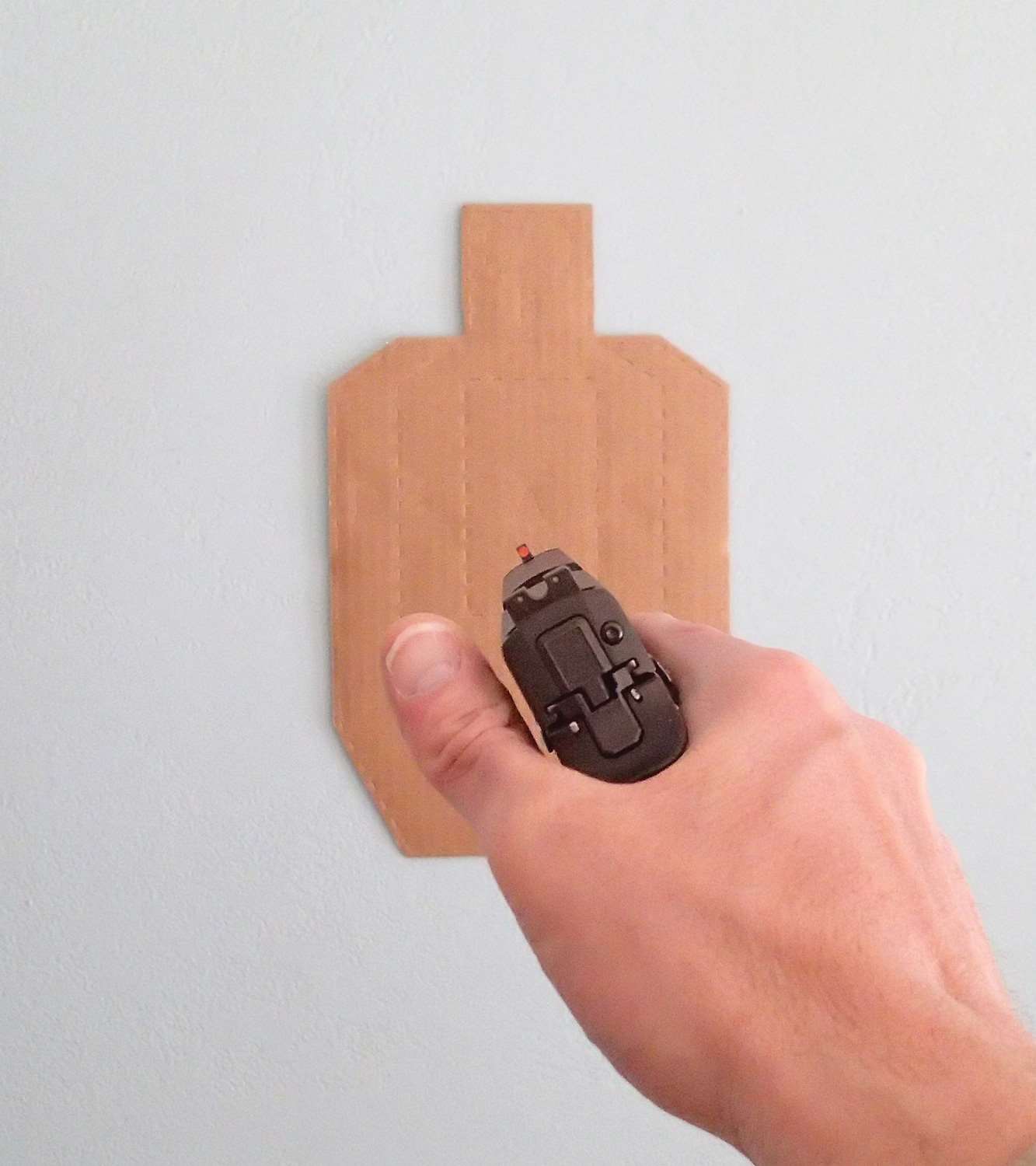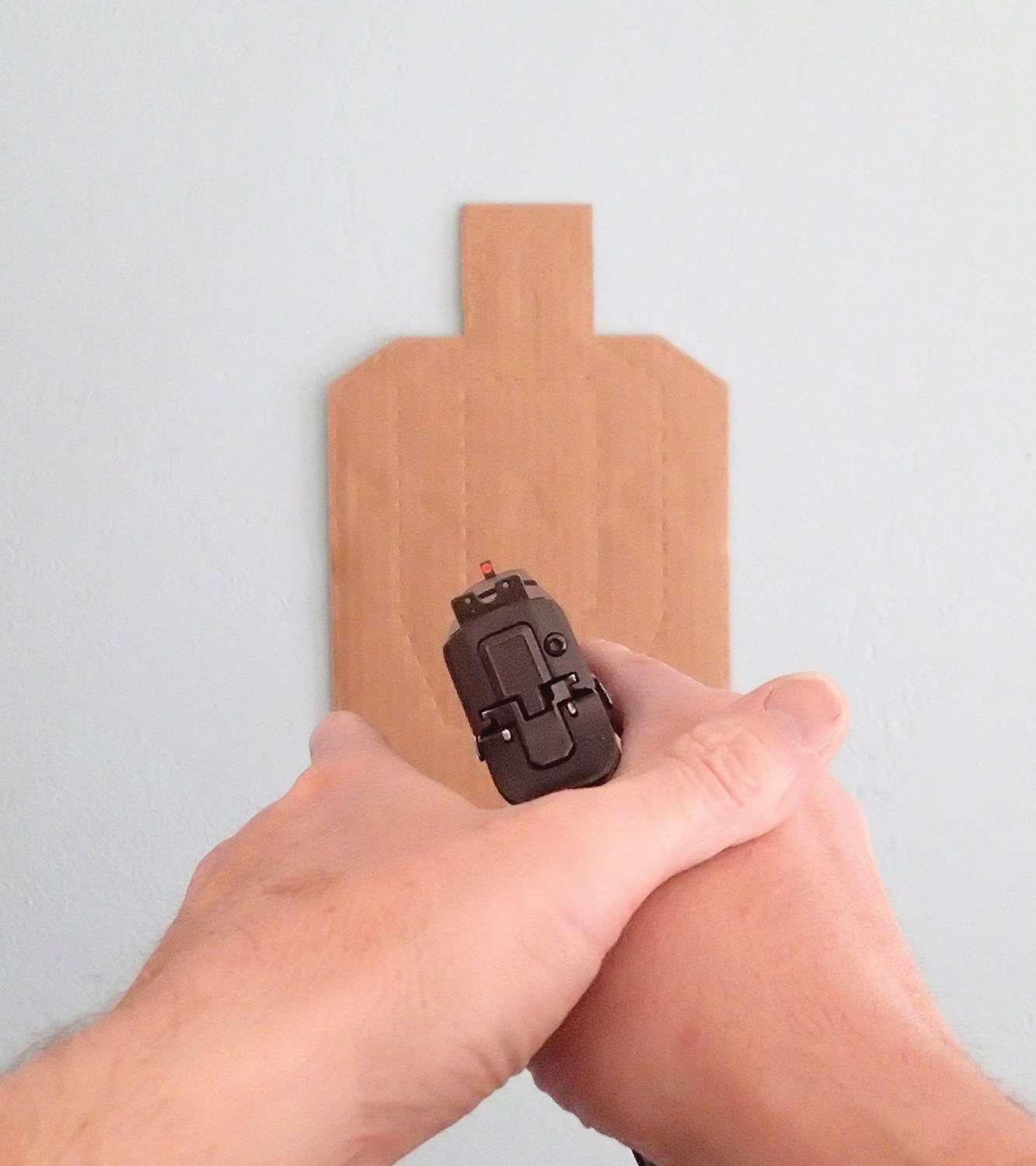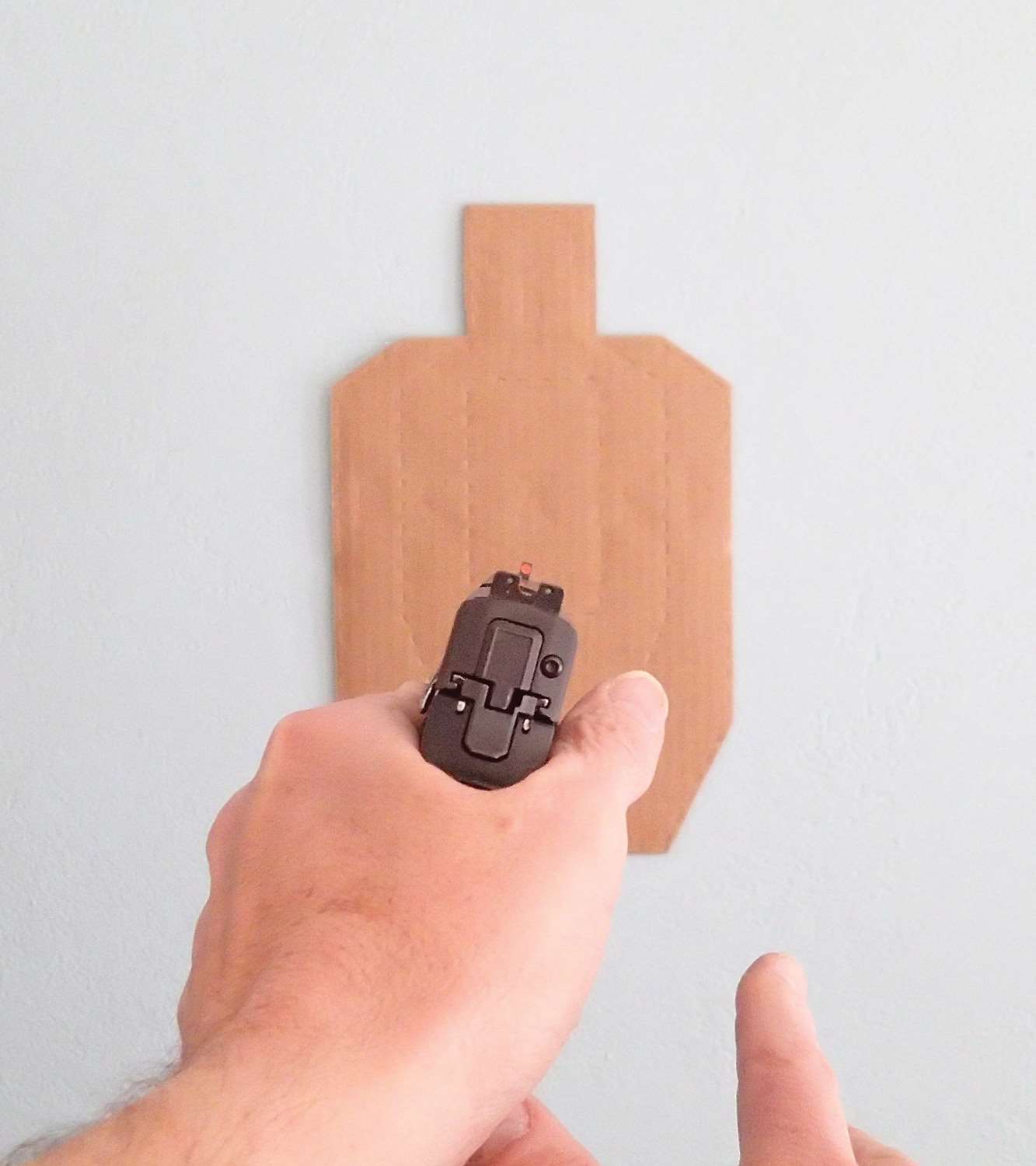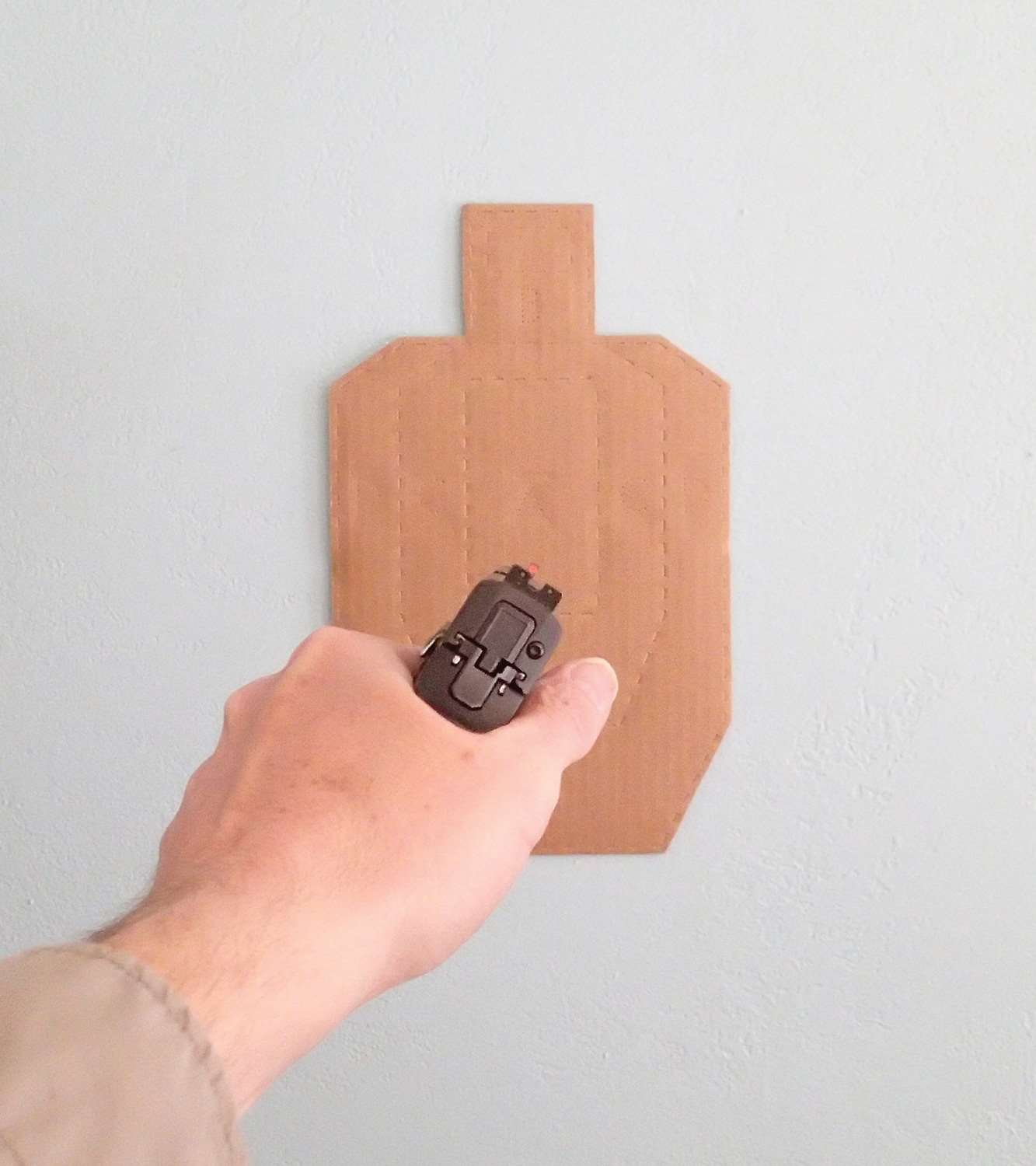
Despite desperate, incessant pooh-poohing in the mainstream media, there’s ample evidence of steady growth in the shooting sports. Especially in the sorts of new participants we’re seeing—more women, of course, but also more juniors—it’s gratifying to see so many folks discovering what all our disciplines have to offer. Good, clean, safe fun is the vast, obvious periphery of shooting, but at the heart of skill at arms is another compensation beyond virtually any other pastime: In unhoped-for times of danger, it can de-escalate a situation, or—if all else fails—protect those we love.
If we take this dichotomy seriously, growing experience usually compels us to another conclusion: The fun built into the first part of exercising our Second Amendment freedom does not, indeed often cannot, adequately prepare us for the second part. The sincere wish to never need such skills is no reason or excuse for not practicing them.
Our first is perhaps the most obvious—shooting with one hand.Maintaining firearm function is a big (but often hidden) deal here.
There’s no mystery here. In fact, modern two-handed pistol shooting is a relatively new affair, as for the first five or so centuries of what most people would consider “handgunning” there is little or no evidence that two hands were considered for use on the pistol. The other hand was far more likely to contain a sword or another pistol.
Maintaining firearm function is a big (but often hidden) deal here. We lose substantial rigidity in our grip system compared to our two-handed architecture and mechanics when we go to one hand (no surprise). The instinctive tendency, however, is to grip harder, and it’s an unfortunate one. The resulting compromise in trigger press leads to jerky, inaccurate shots, and is bad enough by itself. But actual malfunctions may occur, too: If you’re experiencing these, we suggest a peek back here and here for a cure.
Once you settle any grip issues, use the small dot/close target “confidence” drill. All the efficiencies it invokes for two hands still apply with one: Outright visual acuity is out of the equation, and quality hits are again possible as it restores your sight picture/trigger press/recovery cycle.

We have two warnings here, one obvious, and the other perhaps not. Don’t forget to do this with both hands, but also don’t do it for too long. Over-practicing this can lead to fatigue, which may in turn invest you with harder-to-break bad habits down the road. At first, two or three magazines or cylinders of alternating strong- and weak-hand practice is likely to be plenty. If your “start” position allows it, practice retrieving the gun with the weak hand, too.As you get better, add back an often-missed component—a considered, practiced method of moving the pistol from hand to hand.
As you get better, add back an often-missed component—a considered, practiced method of moving the pistol from hand to hand. Precision is necessary to avoid a cataclysmic drop of the pistol, but there’s more to it if you wish to do this well and reasonably quickly.
The basis of a sound method is as much conceptual as manual. We think of this as a side-to-side transfer—merely left to right or vice versa—and such will obviously work. In terms of getting back to a shooting position however, you’ll notice a fairly wild gyration in sight alignment. Practice will cure this only so much, and noticeably slows the transfer—rarely a good thing in a defensive situation.

Instead of a flat, almost slapping movement of the pistol from one hand to the other, we recommend a “skinning,” sliding transfer. With this method, the transferring hand pulls the firearm straight back toward the eyes, dropping the thumb slightly and vacating the trigger/trigger guard as the receiving hand moves forward. There, the thumb is perpendicular to the soon-to-be trigger/index finger and gripping fingers, all of which point downrange, and intercept the rearward motion of the pistol above the transferring thumb and below the beavertail. With the completion of the intercept and closing of the grip fingers, the index finger mounts the trigger as the receiving hand pushes back out toward the threat or target.
This method has several advantages. First and foremost, it leaves the smallest chance of a botched transfer that needs adjustment under stress. This is due in large part to the second advantage: Retention energy never really leaves the firearm. The rearward movement of the sliding method actually pulls the pistol into the advancing receiving hand, and, properly executed, puts tension into the exchange. Flat transfers have the reverse propensity, slowing in direct proportion to the firmness of control.

More important, however, is the ability of the sliding/skinning method to reduce “yaw” in the sight picture. This is hard to describe, but easy to see if you begin practicing the method as we’d recommend: Start closer to the body (with the elbows naturally, comfortably bent, and the pistol chest-high). A flat transfer tends to either roll the pistol from hand to hand, or sort of “waggle” it around the axis of transfer at the front of the grip (the nose of the gun moves one way, and the rear the other).Though we started with one hand, we leave you with a two-handed corollary: Don’t have two techniques where one will do.
In the skinning method, most of the movement of the pistol occurs at the rear, with movement around an axis close to the front sight. The crucial difference and benefit is evident with the completion of the forward sliding movement: It is a “point” with extended trigger finger of the receiving hand, with all the implied advantages we discussed here. Far less “aiming” is now neuro-optical. The point gets us close; eyes and sights need only proof final alignment with the target.

A practice regime for this is simple. First, lots of dry fire repetitions (no ammo in the same room or in the firearm, remember). Next, use a simple variation on the small dot/close target. Start with presentation from the strong side, firing two or three shots, and then transfer, again firing two or three rounds. Always be as slow and precise on the transfer as security of the firearm demands. In this particular case, we believe speed isn’t (or at least isn’t wisely) injected. It comes of its own accord with repetition.
Eventually, we recommend doing this with a timer and single shots from each side. We think you’ll find surprising accuracy can be obtained with shot-transfer-shot splits of 1.5 seconds.
Though we started with one hand in our consideration of difficult hand positions, we leave you with a two-handed corollary: Don’t have two techniques where one will do. When you are faced, say, with a defensive shooting situation where you must change position and shoot around cover from your non-dominant side, wouldn’t it be a good thing not to drop the pistol while getting there?


































